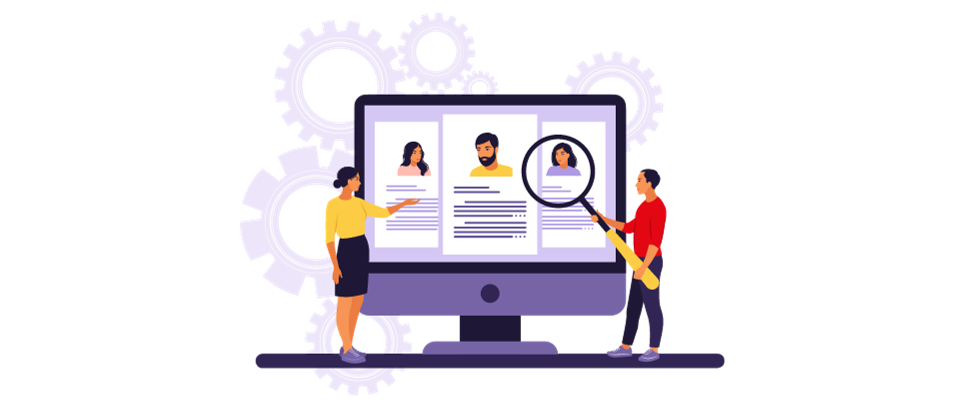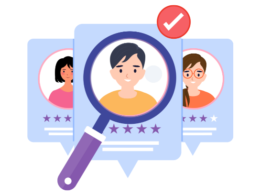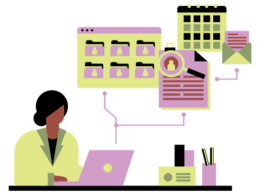Are you ready to take a deep dive into the transformative world of HR Analytics?
Ever wondered how Artificial Intelligence (AI) is reshaping the landscape of Human Resources, making it smarter, more efficient, and profoundly data-driven?
If you’re curious about the game-changing role of AI in HR Analytics, you’re about to embark on an illuminating journey.
What is the Role of AI in HR Analytics?
In today’s dynamic business environment, organizations are increasingly relying on AI to revolutionize the way they manage their workforce. The HR department, once synonymous with paperwork and manual processes, is now at the forefront of innovation, thanks to AI-driven HR Analytics.
1. Predicting Employee Turnover
Imagine having the power to predict employee turnover before it even crosses their minds. AI in HR Analytics is making this vision a reality. AI-driven HR Analytics uses historical data and machine learning algorithms to identify patterns and trends that can predict employee turnover. By analyzing factors such as employee performance, engagement, and job satisfaction, AI can pinpoint individuals at risk of leaving the organization.
This predictive capability empowers HR teams to take proactive measures to retain valuable talent. These measures may include personalized interventions, additional training, or adjustments to compensation and benefit packages. By addressing turnover risks early, organizations can reduce the costs and disruptions associated with employee attrition.
Consider a large retail chain. By using AI and machine learning algorithms, the HR department analyzed historical data related to employee turnover. They identified a recurring pattern: employees who worked overtime consistently were more likely to leave the company. Armed with this insight, HR implemented a proactive approach.
They offered flexible scheduling options to reduce overtime for at-risk employees and provided additional support and training. This led to a significant reduction in turnover rates among this group, saving the company both recruitment and training costs.
2. Enhancing Recruitment and Candidate Selection
AI revolutionizes the recruitment process by automating various tasks involved in candidate selection. For instance, AI-powered applicant tracking systems (ATS) can scan and rank resumes, matching candidates’ skills and qualifications with job requirements. AI chatbots can conduct initial interviews and answer candidate queries, streamlining the hiring process.
This not only saves time but also ensures that HR professionals focus on interviewing the most qualified candidates. Additionally, AI can assess candidates for soft skills and cultural fit, leading to better hiring decisions that align with the organization’s values and goals.
A leading tech company faced a high volume of job applications for its software engineering positions. Sorting through resumes manually was time-consuming and often resulted in missing qualified candidates. By implementing an AI-powered ATS, the company automated resume screening.
The system identified keywords, qualifications, and experience relevant to each role. As a result, HR professionals could focus on interviewing the most promising candidates, leading to quicker and more precise hiring decisions and reducing the time-to-fill critical positions.
3. Delivering Personalized Employee Experiences
AI-driven personalization extends to employee development and engagement. By analyzing an array of employee data, including performance reviews, training history, and career goals, AI can recommend tailored learning paths and professional development opportunities. It can also identify potential mentors and suggest mentorship pairings based on employee profiles.
This level of personalization fosters employee growth, boosts engagement, and ultimately contributes to higher retention rates. Employees feel valued and supported when their professional development aligns with their unique aspirations and needs.
A global financial institution leveraged AI to enhance employee development. The system analyzed employees’ past training and performance data, along with their career aspirations. Based on this analysis, it recommended personalized learning paths.
For instance, employees interested in leadership roles received tailored leadership development programs, while those seeking technical expertise were guided towards specialized training.
This personalized approach increased employee engagement and led to measurable improvements in job satisfaction and retention.
4. Tackling Bias and Promoting Diversity
AI plays a critical role in reducing bias in HR processes. It can analyze job descriptions and highlight biased language or requirements that may inadvertently discourage diverse candidates. When screening resumes, AI focuses solely on skills, qualifications, and experience, without being influenced by demographic information.
Additionally, AI can help standardize compensation structures, ensuring that pay gaps based on gender, race, or other factors are addressed. By eliminating bias from HR practices, organizations create a more inclusive and equitable work environment that attracts and retains a diverse talent pool.
A Fortune 500 company was committed to promoting diversity but faced unconscious bias in its recruitment process. To address this, they implemented AI-driven blind screening of resumes. The AI system removed personal information (names, gender, etc.) from resumes before HR professionals reviewed them.
This approach helped reduce bias and led to a more diverse candidate pool. Over time, the company saw an increase in diverse hires and a stronger commitment to inclusion across the organization.
5. Revolutionizing Workforce Planning
AI-powered predictive analytics transforms workforce planning. It analyzes a wide range of data sources, including market trends, historical workforce performance, and external factors like seasonal demand. By crunching this data, AI provides organizations with precise insights into future workforce needs.
This enables HR teams to make data-driven decisions about recruitment, talent development, and workforce optimization. With AI’s guidance, organizations can ensure they have the right mix of skills and resources to meet business goals efficiently. This proactive approach enhances strategic agility and minimizes talent gaps.
An e-commerce company used AI-powered predictive analytics to manage its seasonal workforce demands. By analyzing past sales data, market trends, and historical employee performance, the system accurately forecasted peak demand periods.
HR then proactively recruited temporary workers with the necessary skills to meet demand during these periods.
This data-driven approach prevented understaffing during busy seasons and overstaffing during quieter times, optimizing workforce costs and improving customer service.
6. Enhancing Employee Well-being
AI doesn’t just analyze quantitative data; it also interprets employee sentiment. Through sentiment analysis of employee feedback and engagement surveys, AI can gauge overall satisfaction levels and well-being within the workplace. When issues arise, HR teams can receive real-time alerts and insights, allowing them to address concerns promptly.
AI-driven interventions might include changes to workplace policies, additional support programs, or improved communication strategies. By prioritizing employee well-being and acting on feedback, organizations create a more positive and supportive work environment that fosters retention and productivity.
An IT company monitored employee well-being using AI sentiment analysis. Employees were encouraged to provide feedback through surveys and anonymous platforms. AI analyzed the sentiment of responses and flagged concerns in real time.
For instance, when a significant drop in sentiment was detected in a particular department, HR intervened promptly to investigate and address the issues.
This proactive approach improved overall employee satisfaction and reduced turnover, particularly in previously problematic departments.
7. Ensuring HR Compliance
AI serves as a vigilant guardian of HR compliance. It continuously monitors HR practices and policies to ensure they align with labor laws and regulations. AI can identify any discrepancies or potential compliance issues, alerting HR teams to take corrective actions promptly.
By automating compliance monitoring, organizations reduce the risk of legal complications, fines, and reputational damage. This proactive approach ensures that HR policies remain within legal boundaries and that employees’ rights are protected.
A pharmaceutical company used AI to ensure HR compliance with labor laws and regulations. The AI system continuously monitored HR policies, employment contracts, and practices. When a potential compliance issue was identified, HR received alerts and recommendations for corrective action.
This proactive approach reduced legal risks and ensured that the company’s HR practices remained in alignment with evolving labor laws, saving the company from potential fines and legal disputes.
The role of AI in HR Analytics is multi-faceted and transformative, empowering HR professionals to make data-driven decisions, enhance employee experiences, and drive organizational success.
As organizations increasingly embrace AI-driven HR practices, they gain a competitive advantage by attracting, retaining, and developing top talent while fostering a diverse and inclusive workplace. The future of HR is undoubtedly intertwined with the capabilities of artificial intelligence, and the possibilities are limitless.
Join Accredian’s Executive Program in Strategic HR Analytics in Partnership with IMI New Delhi!
 Pin
PinUnlock a world of opportunities, enhance your HR expertise, and stay at the forefront of HR Analytics. Elevate your career today by enrolling in our exclusive program!






